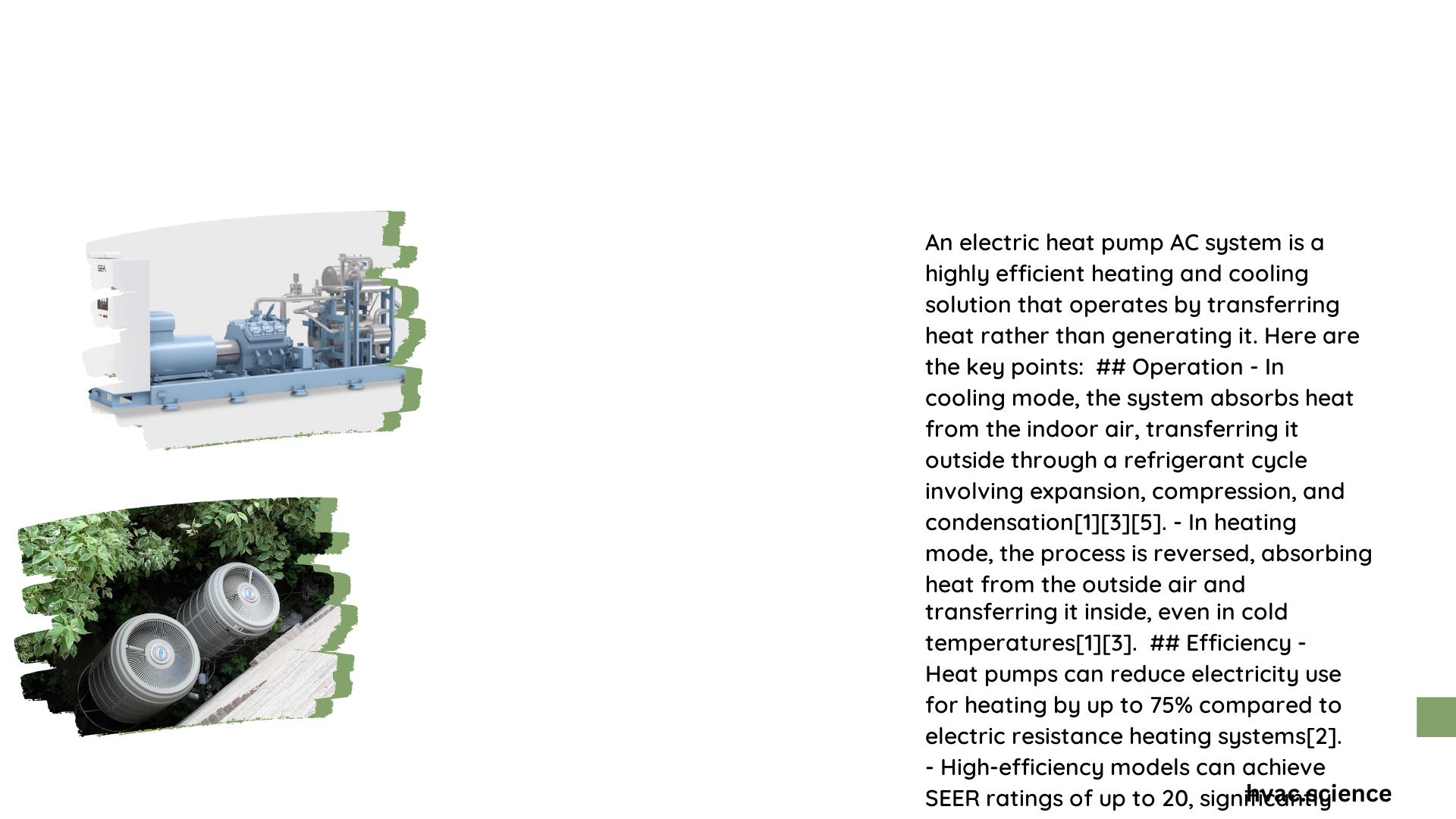Electric Heat Pump AC System: A Comprehensive Exploration
Electric heat pump AC systems represent a revolutionary approach to home heating and cooling, offering unprecedented energy efficiency and versatile temperature control. These advanced systems leverage innovative technology to transfer heat between indoor and outdoor environments, providing both cooling and heating capabilities through a single integrated unit. By utilizing electricity to move heat rather than generate it directly, electric heat pump AC systems can deliver significant energy savings and environmental benefits compared to traditional HVAC solutions.
What Makes Electric Heat Pump AC Systems Unique?
Electric heat pump AC systems differ from conventional heating and cooling methods by utilizing a refrigeration cycle to transfer heat. Unlike traditional systems that generate heat, these units move existing heat energy, making them inherently more energy-efficient.
Key Operational Characteristics
- Dual Functionality: Provides both heating and cooling
- Energy Transfer Mechanism: Moves heat instead of generating it
- Electricity-Powered: Uses minimal electrical input for maximum thermal transfer
How Do Efficiency Metrics Impact Performance?
Seasonal Energy Efficiency Metrics
| Metric | Description | Typical Range |
|---|---|---|
| SEER | Cooling efficiency rating | 14-25 |
| HSPF | Heating efficiency rating | 8-13 |
| EER | Cooling efficiency at specific temperature | 10-16 |
What Factors Determine Installation Costs?
Electric heat pump AC system installation costs vary based on multiple factors:
- Equipment Quality
- Entry-level systems: $2,000 – $4,000
-
Premium systems: $5,000 – $7,500
-
Installation Complexity
- Standard residential installation: $1,500 – $3,000
- Complex commercial installations: $5,000 – $20,000
How Can You Maintain Your Electric Heat Pump AC System?
Essential Maintenance Strategies
- Regular Filter Replacement
- Change every 1-3 months
- Prevents efficiency reduction
-
Improves indoor air quality
-
Annual Professional Inspection
- Check refrigerant levels
- Inspect electrical connections
- Clean internal components
What Are Common Troubleshooting Techniques?
Diagnostic Approach
- Airflow Issues
- Check air filters
- Inspect ductwork
-
Ensure vents are unobstructed
-
Temperature Inconsistencies
- Verify thermostat settings
- Check system sizing
- Inspect refrigerant levels
What Technology Advances Are Emerging?
Future Innovation Trends
- Smart Integration
- Wi-Fi enabled controls
- Machine learning optimization
-
Remote monitoring capabilities
-
Enhanced Refrigeration Technologies
- More environmentally friendly refrigerants
- Improved heat transfer mechanisms
- Higher efficiency compressors
Conclusion
Electric heat pump AC systems represent a sophisticated solution for modern heating and cooling needs. By understanding their operational mechanics, efficiency metrics, and maintenance requirements, homeowners can maximize performance and energy savings.

